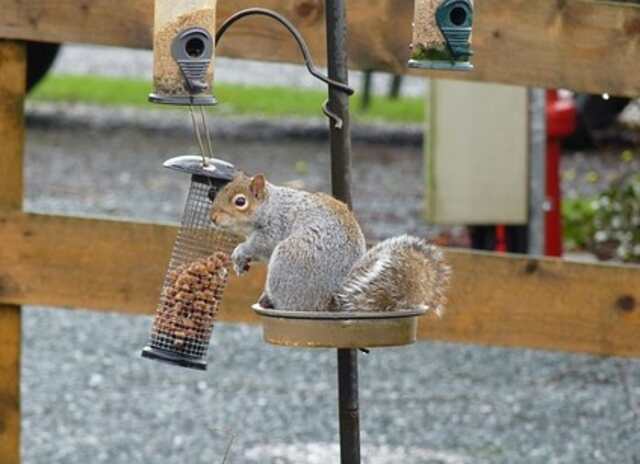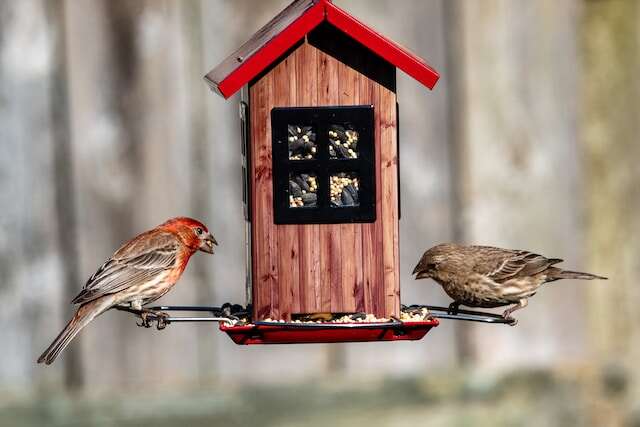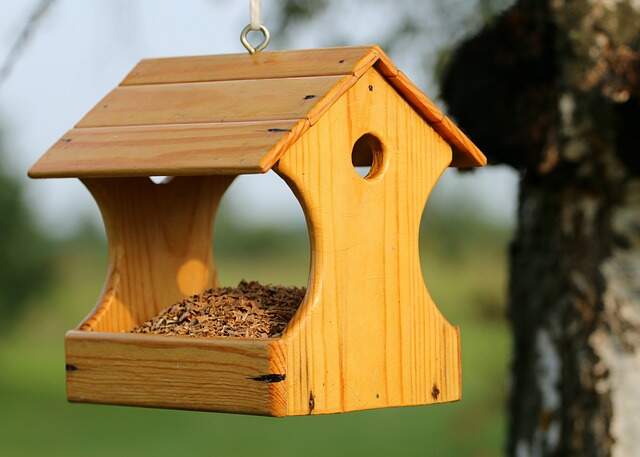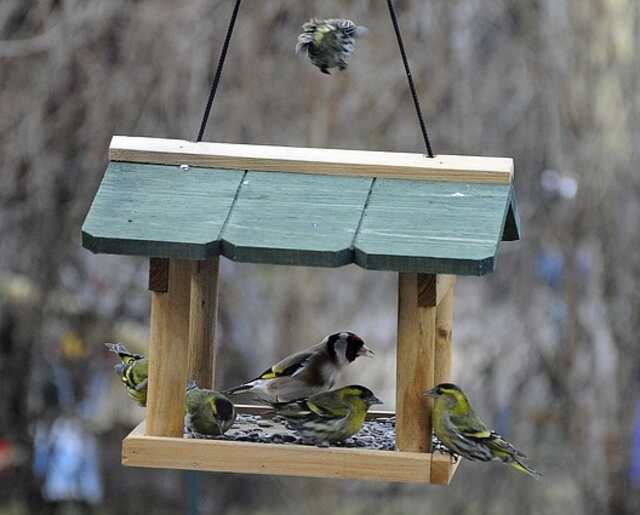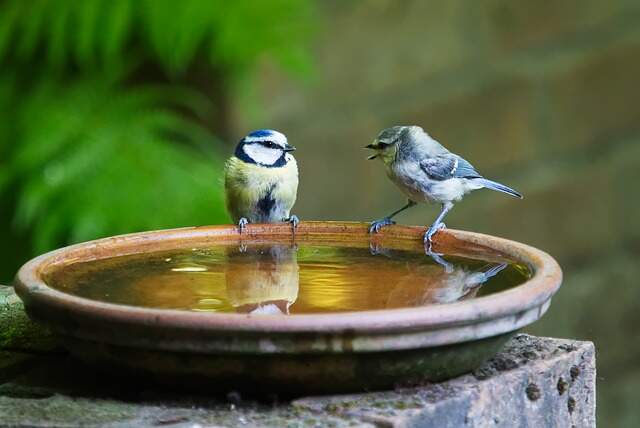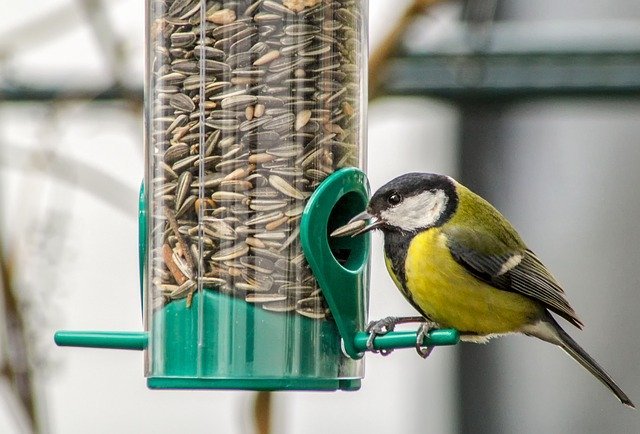Would you like to attract birds to your yard? Setting up a bird feeder can be a rewarding and enjoyable experience, but where do you begin? In this article, we will guide you through the process of how to setup a bird feeder in your yard?
From choosing the right location to selecting the best bird feeders and food, we will provide you with expert tips and advice to help you create a welcoming environment for your feathered friends. Whether you are a seasoned birder or a beginner, follow these steps to bring a little bit of nature to your doorstep.
Table of Contents
Choosing the Best Location for Your Feeder
As a seasoned birdwatcher, I’ve learned that the location of your feeder can make all the difference in attracting a variety of feathered friends. Here are a few pointers to assist you in selecting the ideal location:
Understanding the Factors that Affect Feeder Location
- Factors such as visibility, accessibility, and safety can affect the success of your feeder.
- Consider the distance from trees or other potential hiding places for predators, as well as the amount of sun exposure and wind protection in the area.
Tips for Selecting the Ideal Location for Your Feeder
- Choose a spot that is easily visible from your home, so you can enjoy the birds’ company even when you’re indoors.
- Keep the feeder at a safe distance from windows to avoid bird collisions.
- Consider hanging feeders from trees or placing them on poles with baffles to deter squirrels and other animals from stealing the food.
Common Problems and How to Solve Them
- If you notice that your feeder isn’t attracting many birds, try moving it to a different location with more visibility or better protection from the elements.
- If predators are a problem, consider installing a predator guard or moving the feeder to a safer location.
- If squirrels or other animals are stealing the food, try using a squirrel-proof feeder or a baffle to deter them.
Attracting Birds to Your Feeder
Welcome back, bird enthusiasts! Now that you’ve found the perfect spot for your feeder, it’s time to attract some feathered friends. These tips can assist you in achieving that.
Identifying the birds you want to attract
First things first, you need to figure out which birds you want to see in your yard. Do you prefer colorful songbirds or larger birds like woodpeckers?
Maybe you’re looking to attract some hummingbirds? Once you know which birds you want to see, you can start to cater your feeder setup to their needs.
Understanding their feeding habits and preferences
Different birds have different feeding habits and preferences. Some birds prefer seeds, while others like suet or nectar. Some like to feed on the ground, while others prefer elevated feeders.
Understanding the feeding habits and preferences of the birds you want to attract is key to setting up the right feeding station.
Tips for choosing food and feeders to attract birds
Now that you know which birds you want to attract and understand their feeding habits and preferences, it’s time to choose the right food and feeders. For example, if you want to attract hummingbirds, you’ll need to provide a nectar feeder with a red feeding port to catch their attention.
If you want to attract woodpeckers, consider offering suet or peanuts in a mesh feeder. Remember, variety is key! Offering a variety of food and feeder types can attract a wider range of bird species to your yard. And don’t forget to clean your feeders regularly to prevent the spread of disease among birds.
Next up, we’ll go over how to choose the right feeder mounting method. Stay tuned!
Feeder Mounting Methods
Alright, let’s talk about feeder mounting methods! As an experienced bird enthusiast, I’ve tried it all when it comes to hanging and mounting my feeders. In this section, I’ll break down the different types of mounts and give you some tips on how to choose the best one for your feeder and location.
Understanding the different types of feeder mounts
First, let’s go over the different types of mounts. There are pole mounts, hanging mounts, and window mounts. Pole mounts are great for open spaces where you can install a pole in the ground.
Hanging mounts are ideal for smaller spaces or areas where you can attach the feeder to a tree branch or other sturdy object. Window mounts, as the name suggests, attach directly to your window and are great for close-up birdwatching.
Selecting feeder mounting method and location
When it comes to choosing the best mounting method for your feeder and location, there are a few things to consider. If you have a large backyard or open space, a pole mount is a great option.
Hanging mounts are ideal for smaller yards or areas with trees or other objects to hang the feeder from. Window mounts are great if you want to get up close and personal with your feathered friends.
| Mounting Method | Description | Pros | Cons | Best for |
|---|---|---|---|---|
| Pole Mount | Feeder is mounted on a pole in the ground or attached to a deck railing | Keeps feeder off the ground and away from squirrels and predators | Can be difficult to install and may require additional equipment | Large yards, open spaces |
| Tree Mount | Feeder is hung on a tree branch or trunk | Easy to install | Squirrels and other animals can climb the tree and access the feeder | Small yards, wooded areas |
| Suction Cup Mount | Feeder is attached to a window using suction cups | Provides a close-up view of feeding birds | Limited to small feeders and certain window types | Apartments or homes with limited outdoor space |
| Deck Mount | Feeder is mounted on a deck railing or post | Easy to install and provides a close-up view of feeding birds | Can attract squirrels and other animals to the deck | Homes with decks or balconies |
| Shepherd’s Hook | Feeder is hung from a tall, free-standing hook | Provides a close-up view of feeding birds and keeps feeder away from predators | Can be blown over in strong winds | Small yards, gardens |
Tips on securing your feeder from predators
No matter what mounting method you choose, it’s important to make sure your feeder is secure and protected from predators. For pole mounts, make sure the pole is sturdy and installed deep enough in the ground.
For hanging mounts, use a sturdy rope or chain and make sure the feeder is high enough to deter predators like squirrels. Window mounts should be securely attached to the window and out of reach of cats and other predators.
In summary, choosing the right feeder mounting method is important for both attracting birds and protecting your feeder from predators. By understanding the different types of mounts, considering your location, and taking steps to secure your feeder, you’ll be able to enjoy the beauty of your feathered friends without any unwanted visitors.
Install a bird feeder to provide your backyard with the chance to attract more wildlife. Try one of the easy methods below: My recommended products below are direct linked to Amazon.
- Hang it from a tree with these (hanging chains).
- On a porch railing with these (deck hooks).
- Near natural food sources like bushes and flowers.
- Hanging on fences using (hanging brackets).
- Attached to a 2nd floor window. Check out this window bird feeder.
- Mounted to a pole or post (Recommended all-in-one kit includes hopper feeder + pole mounting kit with hardware) assembly is very easy. (Universal mounting bracket for heavier units).
- On top of an old tree stump.
- On Your Porch or Balcony: If you have an outdoor porch or balcony with room for a feeder, it is one of the best spots for attracting many types of birds. A simple plastic tube-type feeder will do the trick.
- Near a water source such as a birdbath or pond.
Alright, let’s talk feeders! This is a crucial part of bird feeding, and it’s important to choose the right one for your feathered friends. Here’s what you need to know:
Choosing the Right Feeders
There are a variety of feeders on the market, each designed to attract different species of birds. Some of the most common types include tube feeders, hopper feeders, platform feeders, and suet feeders. Each type of feeder has its own benefits and drawbacks, so it’s essential to understand what you’re looking for.
Types of feeders and their benefits
Tube feeders are great for small birds like finches and chickadees. Hopper feeders are ideal for larger birds like cardinals and grosbeaks. Platform feeders are excellent for ground-feeding birds like doves and juncos, while suet feeders are perfect for woodpeckers and nuthatches.
Choosing the right bird feeders for your yard and species
When selecting feeders, consider the size and species of birds that visit your yard. Also, think about the feeder’s capacity and how often you’ll need to refill it. Choose a feeder that’s easy to clean and maintain, and be sure to place it in a safe location away from predators like cats.
Common Problems and How to Solve Them
One common issue with feeders is squirrels raiding them and eating all the food. To solve this problem, consider purchasing a squirrel-proof feeder or placing baffles on the feeder pole to deter the pesky critters. Another problem is the buildup of mold and bacteria in the feeder, which can harm birds. To prevent this, clean your feeder regularly with hot, soapy water and rinse thoroughly.
Remember, choosing the right feeders is just as important as choosing the right food. With these tips, you’ll be on your way to creating the perfect bird feeding station in your yard. Happy bird watching!
| Bird Feeder Type | Benefits |
|---|---|
| Hopper Feeder | Large capacity, protects food from the weather, accommodates a variety of bird species |
| Platform Feeder | Easy to clean, accommodates ground-feeding birds |
| Tube Feeder | Protects food from the weather, accommodates small birds |
| Suet Feeder | Provides high-energy food for birds, attracts woodpeckers and other clinging birds |
| Hummingbird Feeder | Attracts hummingbirds, easy to clean and refill |
| Nyjer Feeder | Attracts finches and other small birds, easy to clean and refill |
Backyard Bird Information Tool
Use this tool to learn more about common backyard birds. Select a species from the drop-down menu to see information about the proper feeder and food type, as well as some interesting facts about the bird.
| Feeder | |
|---|---|
| Food | |
| Facts |
Welcome to Section 5 of our guide on how to set up a bird feeder in your yard! As an experienced bird enthusiast, I can tell you that water is a key ingredient to attracting and keeping birds in your yard. In this section, we’ll dive into the importance of water and how to provide it for our feathered friends.
Water: The Secret Ingredient for Your Feeder
We all know that birds need food to survive, but many people overlook the importance of water. Providing a source of clean water can attract a variety of birds to your yard and keep them coming back for more. Not only do birds need water for drinking, but they also use it for bathing and grooming.
Understanding the Importance of Water for Birds
Did you know that birds need to drink water every day to stay healthy? In addition to quenching their thirst, water helps birds digest their food and regulate their body temperature. During the hot summer months, a bird bath can also provide a much-needed respite from the heat.
Tips for Providing Water for Birds in Your Yard
When it comes to providing water for birds in your yard, there are a few things to keep in mind. First, make sure to clean and refill the water source regularly to prevent the growth of harmful bacteria.
Second, choose a shallow water source that is no more than two to three inches deep to prevent birds from drowning.
Finally, place the water source near cover, such as bushes or trees, so that birds can quickly escape from predators.
Choosing the Best Birdbath and Location for Your Yard
There are many different types of bird baths to choose from, including pedestal, hanging, and ground-level baths. When selecting a birdbath, consider the size and depth of the bowl, as well as the material it is made from.
Ceramic and concrete baths are durable and easy to clean, while plastic and metal baths are lightweight and affordable. When it comes to location, choose a spot that is easily visible from inside your home but also provides some privacy for the birds.
Avoid placing the birdbath in direct sunlight, as the water can quickly evaporate and become too hot for the birds to use. Instead, choose a spot that is shaded for at least part of the day.
To help you choose the best water source for your yard, we’ve included a helpful table below:
| Water Source | Pros | Cons |
|---|---|---|
| Birdbath | Attracts a variety of birds | Requires regular cleaning |
| Dripping Water | Mimics the sound of a natural water source | Can be difficult to set up |
| Mister | Provides a fine mist for birds to bathe in | Can be expensive |
| Water Fountain | Adds a decorative element to your yard | Requires electricity or batteries |
| Puddle | Attracts ground-dwelling birds | Can be difficult to maintain |
With these tips and tricks, you’ll be able to provide a source of clean water for the birds in your yard and keep them coming back for more!
Frequently Asked Questions
Where should I put my bird feeder in my yard?
When it comes to choosing a bird feeder, you should make sure that the bird feeder is placed in an area that will attract as many types of birds as possible.
Step 1) Place your bird feeder in an area that receives plenty of sunlight.
Step 2) Keep your feeder away from trees and shrubs, so that the seed will not be consumed by squirrels or other animals. You should place it where there is plenty of sunlight and away from any trees or bushes for safety reasons.
Step 3) Place the feeder near a source of water to attract thirsty birds, like a birdbath or pond.
Step 4) Keep your yard and garden clean
How to select the right birdseed for your bird feeder ?
Choosing the right birdseed is important because it determines what type of birds you will attract to your yard. Different types of seeds attract different types of birds and so choosing the wrong seed can result in a lack of variety or too many pesky squirrels!
Here are some tips on selecting the best seed:
- -If you want to attract numerous species, use mixed seed which includes peanuts, sunflower seeds, millet and safflower.
- If you want a particular species to visit your feeder, purchase only that type of seed.
- -When choosing between black oil sunflower seeds and striped sunflower seeds for your feeders, remember that the smaller birds are more attracted to the striped variety while larger birds prefer black oil seeds.
- -For woodpeckers and nuthatches specifically, we recommend millet which is small enough for their beaks but high in nutrients at the same time.
- -A good tip for all birdseed mixes is to offer a variety of textures and colors, which makes them more enticing to different types of birds.
Using seed mixes for bird feeders can provide a variety of seed, but they will also attract various types of birds. You can choose between the different types of seeds for feeding.
For a quality bird food to attract the greatest variety of colorful songbirds, I would recommend the Wagner’s 62059 Greatest Variety Blend Wild Bird. Find the lowest price on Amazon.
To attract chickadees, robins, orioles, blue jays, titmice, buntings, cardinals, grosbeaks, towhees, nuthatches and Cedar Waxwings. I would recommend the Lyric 2647413 Fruit & Nut High Energy Wild Bird Food. Get it for a great price on Amazon.
Bird Feeder Types
The bird feeder should be placed high in the area in order to allow it to remain in an open position so that birds will be able to see it. Birds tend to visit the feeder if they find the seed appealing.
There are many varieties of bird feeders, some are built with the intention of attracting only one particular species of bird, while others are more general.
A premium bird feeder that will attract many birds to your yard that I use myself with great success is the Squirrel-proof Bird Feeder w/6 Feeding Ports. This feeder is squirrel proof and has a lifetime warranty and no tools required. Find the lowest price on Amazon.
For apartments and condos an excellent feeder is the Window Bird Feeder with Strong Suction Cups and Seed Tray. Get amazing views of your favorite birds without binoculars. Get the best deal for this feeder on Amazon.
To attract different types of birds I would recommend a multi feeder such as the Bird Feeding Station Kit Bird Feeder Pole. This all-in-one bird feeder holder has everything you need to attract birds and decorate your garden. You can find the best deal on Amazon.
Related Post:



